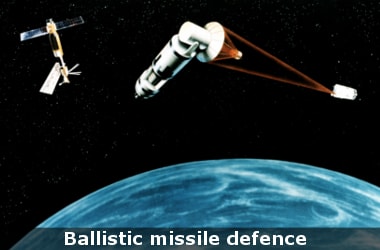
India took a big step towards an operational two-tier ballistic missile defence (BMD) system by testing a high-altitude interceptor missile to destroy an incoming ballistic missile over the Bay of Bengal on 11
th Feb 2017.
This missile can destroy an enemy missile high in the sky. Only four to five countries in the world have done this.
The Defence Research and Development Organisation was itself gung-ho about its long-delayed BMD system, claiming it would now be possible to deploy the two-layered missile shield to protect a city or strategic installation in two years.
But it had earlier also promised that New Delhi would get the missile shield, capable of tackling hostile missiles with a 2,000-km strike range, by 2014 at the latest.
Scientists, however, say they are confident of achieving the target this time.
The "exo-atmospheric" interceptor missile tested on 11th Feb 2017, also called the PDV (Prithvi defence vehicle), after all, directly hit the target missile at an altitude of 97 km.
The test began at 7.45 am with the two-stage target missile, replicating an enemy ballistic missile, being launched from a ship in the Bay of Bengal.
In the fully-automated operation, with long-range radars continuously tracking the target and feeding data about its trajectory to the mission computers, the interceptor missile was then fired from the Abdul Kalam Island (Wheeler Island) off Odisha coast around 200-km away.
India has crossed an important milestone in building its overall capability towards enhanced security against incoming ballistic missile threats.
It has entered an exclusive club of four nations (US, Russia, China and Israel) by developing capabilities to secure its skies and cities against hostile threats.
DRDO's experimental two-tier system is designed to track and destroy ballistic missiles both inside (endo) and outside (exo) the earth's atmosphere.
The third layer, in turn, is planned to tackle low-flying cruise missiles, artillery projectiles and rockets in the line with the overall aim to achieve near 100% kill or interception probability'.
Phase-I of the BMD system, with interceptors flying at 4.5 Mach high-supersonic speeds to intercept enemy missiles, is meant to tackle hostile missiles with a 2,000-km strike range.
Phase-II will be geared for taking on 5,000-km range missiles, with interceptors at hypersonic speeds of 6-7 Mach.
BMD Systems: Know More- BMD systems are highly complex to develop and deploy.
- They require an overlapping network of early-warning and tracking sensors.
- They also need reliable command and control posts, land and sea-based batteries of advanced interceptor missiles.
- BMD systems also cannot ensure 100% destruction of all incoming hostile missiles.